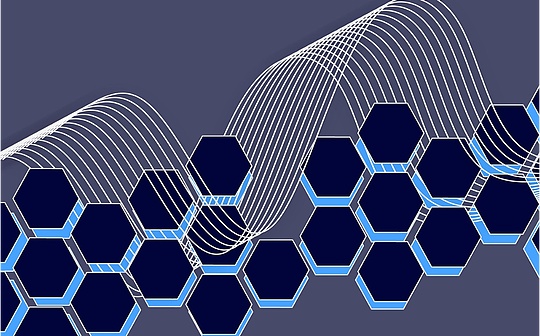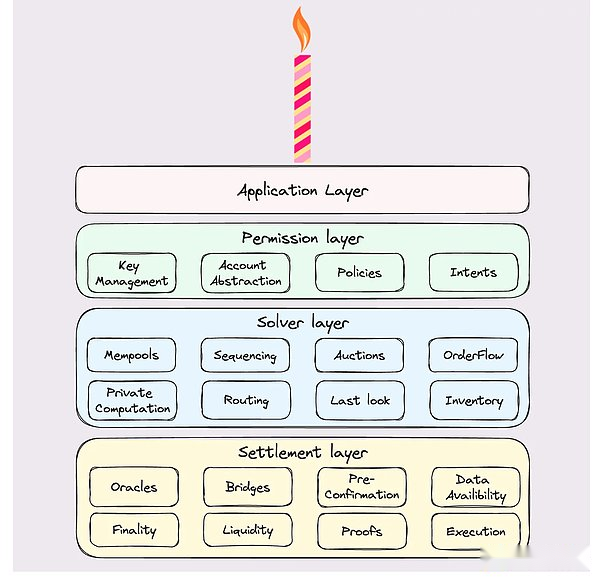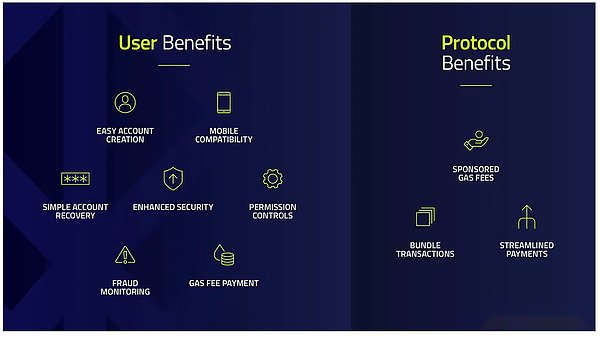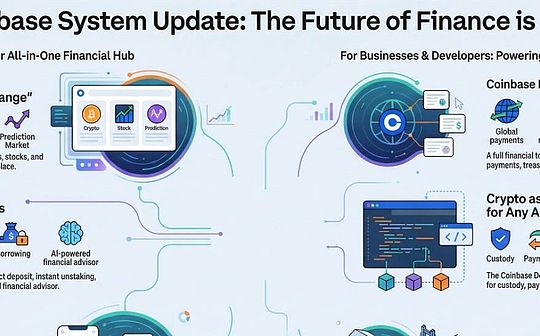
Author: PEDRO Source: ModularMedia Translation: Shan Ouba, Bitchain Vision
In -depth research chain abstract authority layer, and explore how the wallet abstract achieves the future of “one account, a balance”.
The abstraction of the chain depicts such a vision: “In the future, the use of blockchain will not need to pay more attention to the blockchain itself and its bad user experience.”
Simply put, this means that as a user, you don’t have to worry about all complexity involved in interacting with blockchain (manages multiple wallets, GAS cost tokens, etc.).All information about the chain abstracts the user by default, you only need to use an application.
In the end, the goal is to make the blockchain experience closer to the traditional Internet, and users can switch seamlessly between each application.Think about your experience of using the Internet in your daily life -when you buy shoes on Nike.com, you will not sit there and think about which cloud service you use.You only need to access the website and buy shoes.
However, this is not the case in the current encryption world, not necessarily because you want to know (although yes, many of us want to know), and more importantly, because you must know.
Let’s take a look at today’s web3 experience.Suppose you are a Polygon user, just heard that a cool new NFT is about to launch on the Base network.
-
First of all, you need to find a cross -chain bridge to transfer your matic from Polygon to Ethereum
-
Once you receive your MATIC on Ethereum, you must go to DEX (such as Uniswap) and convert your matic to ETH.
-
Then you need to make sure to add the Base network to your wallet.(You first connected Polygon)
-
After adding the base to the wallet, you can find and use the cross -chain bridge to transfer ETH from Ethereum to the base network.
-
After successfully receiving the ETH bridge to Baseonce on the base, you can access the site to cast NFT.
-
The chain drawing stack developed by Everclear (previously referred to as Connext) focuses on the chain drawing method centered on intent.
-
The multi -layer framework of Particle Network is classified by three interoperable layers of operation.
-
The CAKE framework proposed by Frontier Research provides a comprehensive mechanism to classify and understand the fine -grained technology that constitutes the abstract chain.
-
Signature abstraction:As you know, every transaction you want to submit on a given network requires you to provide a signature, which traditionally uses a private key-this means that anyone who controls this private key can access the given accountFund.Through signature abstraction, users can define customized authorization rules, such as: transaction restrictions, multiple parts approval, social recovery, and capital freezing.
-
Abstract cost:This enables users to pay GAS costs with any token, and also enable the team to completely delete the GAS cost-the cost of the team still needs to be paid, but the team uses the “Paymaster” contract (this is part of the account abstraction model) sponsor sponsorcost.
-
Nonce abstraction (batch process):Generally, when simply exchange, you must (1) approve transactions, and (2) execution transactions.Instead of splitting this exchange into two separate transactions, it is better to approve them as a transaction (one -time approval and execution exchange).
-
Traditional trading method:Suppose you want to convert 100 DAI (a stablecoin) to ETH on the DEX of UNISWAP.Traditionally, you can execute this transaction by specifying the exact DEX and parameters (for example, “I want to exchange 100 dai to ETH on Uniswap, and the sliding point tolerance is 0.5 %).This method focuses on transaction details and requires you to manually select platforms and parameters.
-
Method -centered method:However, your real intention may be wider: “I want to convert 100 dai to as much ETH as much as possible at the cost of as low as possible.” DEX’s specific choice, GAS costs and slippery parameters are not your main consideration.Instead, your intention is to achieve the best value of DAI.
-
Unified balance management: Wallet drawing enables a single account to manage the balance and transaction of multiple chains.Users no longer need to manually bridge assets or multiple accounts that manage different chains.The wallet interface provides a unified view of all balances, making the interaction with various blockchain seamless and intuitive.
-
Simplify transactions: By eliminating the complexity of multiple accounts, users can execute transactions across different chains from one interface.This reduces the friction involved in cross -chain interaction and promotes greater interoperability in the ecosystem.
-
Auth SDK: A decentralized solution that can provide email and social login for applications, and immediately generate safe non -hosted wallets for users in the application.
-
Gasless SDK: Use account abstraction to allow developers to charge GAS fees from users.In other words, developers can sponsor GAS costs, so that your DAPP is free to users.
-
Sendit:A consumer application that needs only one email to achieve encrypted transmission.
-
L1 based on a modular universe can verify user intentions and act as a status machine, as a basis of coordination between users or solving/fillers.
-
MPC (Multi -Party Computing) Network, Ensure the settlement of the settlement of the solution device, the security and distributed signature of the balance.
-
Intention to start: When users express their intentions, such as transferring funds or interacting with DAPP, funds from the user source (no matter where they hold assets) will be temporarily collectedIn Arcana VaultsEssence
-
Council of the solution/filler: The solution and the filter subsequently fulfill the user’s intention on the target chain.These entities ensure that the user’s operation is completed, without the need for users to manually bridge assets or interact with multiple chains.
-
MPC network verification: After the user’s intention is met, Arcana’sMPC networkIt will run to ensure that the resolution of the task or the filling person has the right to get the corresponding settlement.This requires the distributed consensus of nodes in the network.
-
Threshold: When the effectiveness of the node of the number of thresholds is effective, the MPC is successful, and it is confirmed that the solution/filler does complete the task correctly.
-
Insurance library settlement: Once verified, the Arcana insurance library will verify the signature from the MPC network and continue to settle funds with the solveor/filler to complete the process.
-
Traditionally, when using DAPP such as AAVE, users must choose which network they want to use to use AAVE -borrowing DAPP to connect to multiple chains. Each chain has its own market and income.Add the chain to the combination, and the user can see all markets on all chains in one interface.
-
Arcana’s walker provides users with total asset balances across different chains.For example, I have 5 USDCs on Ethereum, Arbitrum and Polygon, but on my Arcana wallet, I only see a unified balance of 15 USDC.Similarly, the bridge is not involved at all.
-
Alice discovered a Play-TO-EARN DAPP.The DAPP hosting is on Arbitrum and uses the Universal Accounts of the PARTICLE Network’s Universal SDK.
-
Alice started using DAPP.The assets in her wallet (Polygon-Native) are used for basic DAPP interaction.The bridge is automatic and automatically executes when she interacts.
-
After playing for a while, Alice made some tokens.She bought a NFT for her friend Bob’s birthday.What she doesn’t know is that the NFT hosting is on Optimism.She can seamlessly send it to Bob’s general account.The important thing is that in her entire experience, Alice only used a GAS token.
-
Bob decided to use NFT loans on Solana and buy Meme Bitcoin Ordinal with the income.He only needs to click the mouse a few minutes in a few minutes to complete this operation through the same account.
Okay, you finally finished -but a lot of steps (we have skipped a lot!).
Now let us calculate it to the +1000 chain, which is the development direction of the modular revolution, and things have begun to become crazy and unrealistic.Not suitable for ordinary users at all.
Due to this experience, web3 eventually led to a user island in each blockchain.The huge friction of cross -chain transfer funds means that users are still isolated in specific ecosystems, thereby reducing the driving force for real innovation. New users are facing huge entry barriers when entering the field.
This is the chain abstract place.
Ideally, you don’t have to go through all these steps.You only need to download the wallet once, instead of worrying about the specific network deployed to the DAPP you want to use, and you only need to bet on it once, and use any assets you own to pay the GAS fee.In essence, you only need to bet on the wallet and use the application; in addition, there are nothing else, for end users, only one step.
This is a promise of chain abstraction.
Chain abstraction is not a single product or solution, but the result of the experience of multiple teams to achieve this experience.
Chain abstraction simplifies the interaction between users and multiple blockchains by creating the complexity behind the scenes.It separates the user experience and applications from the underlying infrastructure to achieve a seamless and user -friendly interface across different blockchain networks.In the future of our module -based blockchain, thousands of new chains will be generated. Chain abstraction ensures that users can interact with these different ecosystems without having to understand or manage the complexity involved.
The web3 experience began to feel like the traditional Internet experience we are used to.
As mentioned above, the vision of this chain abstract world requires multiple teams to work together across different levels -each layer solves different problems, but to achieve the ultimate goal of the chain abstraction state.
Nevertheless, these levels of expression are different:
Just like the tabasco tabasco told me: “”We don’t think that these frameworks must compete, they basically just express different degrees of particle size“” “.
For the purpose of this series, we will use the CAKE framework as a reference when the layers.
>
In the next few weeks, we will focus on different layers of the CAKE framework. From here, it is the authority layer (called the account layer in the other two frameworks).How to interact with dapps and blockchain networks.
Specifically, we will explore key elements that constitute the authority layer (if you are willing, it can be called the sub -layer in the layer).We will involve account abstraction, wallet abstraction, intention and arrangement.These components let us realize the future of “one wallet, one account”.
What is the authority layer
The license layer is located on the top layer of the Cake stack, acting as the interface between users and blockchain.On this level, users interact with DAPP through connecting wallets and requesting specific results or “intent”.In essence, this layer is responsible for abstracting all technical complexity from end users to ensure seamless user experience.
In essence, the license layer is abstracting the complexity of blockchain interaction by managing user intentions (whether transaction, equity operations, or other activities related to blockchain -related activities), and ensure that they are implemented safely, accurate and efficiently.
Now, let’s take a look at the abstraction and intention of accounts to see how these technologies realize the future of wallet abstraction.
Account abstraction
>
In general, there are two types of blockchain accounts: external accounts (EOA) and contract accounts.(Although we should mention OneBalance recently launched a new account type called “credible account”).
Traditionally, we are used to using EOA -METAMASK, Phantom and most of the early wallets.However, EOA’s function is limited to basic operations such as transaction and interaction with smart contracts.In addition, EOA is bound to a single key pair (public key and private key), which means that if you cannot access the private key, you can actually access the account.
Until recently, with the rise of ERC-4337, EOA has become the only way to interact and sign transactions on Ethereum-ERC-4337 is not the first to abstract accounts into Ethereum standards, but as of now, it is nowIt is the most acceptable standard.
Enter the smart contract wallet, which is enabled by the contract account.
The contract account brings account abstraction to users.The contract account is managed by smart contract code, which means that the account behavior is controlled by any custom logic.In short, this will change the wallet experience, from the uniform model to a mode that is more suitable for your own preferences, whether it is from security, execution, or other parameters.
Let’s take a look at some of the benefits of account abstraction.
The benefits of account abstraction cover three different use cases:
Similarly, because the account itself is a smart contract, developers can write any type of logic in it.
intention
As mentioned in the previous article, the account abstraction has not yet appeared in the previous article, because it only covers half of the equal formula.
“Account ABSTRACTION optimizes the user experience from entry to expression, but still has not solved the path of path from expression to result.”
In other words, account abstraction makes it easier for users to enter the world of web3 and manage the complexity of accounts, but users still have to manage each chain operation they want to implementIt becomes more complicated.
This is where the intention appears.
The intention, as the name suggests, refers to the intention or operation that users want to perform on the chain, such as sending tokens, pledge or bridge.More specifically, intention refers to the result that users want, not the way to achieve the result.This transforms the perspective from transactions to demand -based.
The permission layer accepts these advanced intentions and converts them into executable instructions that can be processed by the blockchain.
Let’s take a look at an example.
In the design centered on the intent, the system will interpret your intention and automatically route your trading to the best path -whether it is using different DEX, aggregating liquidity on multiple platforms, or splitting the exchange to the exchanges toMaximum trading to maximize the slide points and costs.As mentioned above,Focus on the results of the definition expectations from the specified steps.
This method allows users to focus on their true goals without being troubled by the complexity of a single transaction.It also makes it easier for non -experts to contact the ecosystem because they may not be familiar with the best platform or strategy to achieve goals.
Abstract wallet
So where does the term “wallet abstract” come from?
The wallet abstract aims to simplify the user experience by integrating all blockchain interconnect to a single interface, allowing users to interact with multiple chains and easily handle complex transactions.
Wallets are built on the previous concept (account abstraction and intention) to create a unified wallet experience to abstract the complexity of multiple keys, accounts, balances and GAS tokens across different blockchains.
Wallet drawing mainly solves the problem of status/balance fragmentation, and allows accounts to maintain consistent balances on all chains, so that they do not need to manually bridge between the balance status (chain).
The goal is to create a “one account” future, and users can seamlessly interact with the entire blockchain ecosystem.
Who is building this future?
Arcana network
Arcana is a modular L1 blockchain, which has recently announced its new vision, that is, creating a chain abstract agreement, aiming to eliminate the complexity of processing multi -chain assets and GAS fees.This allows users to enjoy a smooth multi -chain experience with only one wallet and a unified balance without worrying about the specific details of cross -multi -chain bridge connection or paying GAS fees.
Although this wish was officially announced a few months ago, Arcana has built products in the abstract field for some time.
It is also important to clarify how Arcana handles assets and transactions.ArcanaUser assets without storageEssenceOn the contrary, users always keep their assets in their wallets, just like they use any external account (EOA) wallet.This method gives priority to the current pattern of most users interacting with EOA, rather than entering the smart contract account directly. The Ethereum ecosystem under the abstraction of the account is still developing.
The core of the Arcana solution is:
Various activities undertaken by the Arcana Chain Abstraction protocol include:
This is a practical demonstration of the Arcana chain abstraction kit.
In this demonstration, we can see the chain abstract application in practice -AAVE.
This will eventually bring a better developer experience, because you no longer need to worry about re -deploy your application on each chain you want to steal the user.Instead, you can deploy your application once on Arcana’s L1 and automatically establish a connection with other network users (and applications) supported by Arcana.
Particle NetworkThe
PartICLE Network is leading in the field of chain pumping by virtue of general accounts. Its design purpose is to simply provide users with single accounts and balances that can be used on any chain.Through general accounts, PARTICLE Network has eliminated the need to manually manage assets across different chains; forgot to bridge or try to remember which chains you are holding funds.Their stack provides three key functions:General account, general liquidity and general GASEssenceGeneral accounts have simplified user access by merging multiple blockchain status into one, while general liquidity and general GAS promote seamless cross -chain transactions and payment without having to manually change the trouble.In essence, use any funds on the chain to pay transactions and related GAS costs.
This is a demonstration of the actual operation of Particle Network.
Let’s take a look at the example of a general account in the implementation process:
Just use applications to forget the underlying chain they use; this is essentially implemented by general accounts.
The architecture of Particle Network supports general accounts, and uses the first level of the blockchain to coordinate and settle cross -chain transactions on the external chain (to support the characteristics of general GAS and general liquidity mentioned earlier).
CapsuleThe
Capsule is an embedded wallet service that has been used by teams such as Hedgehog. Hedgehog is a registered investment consultant and is committed to introducing traditional financial practice into DEFI.Hedgehog uses Capsule’s self -custody wallet infrastructure to provide users with non -custody storage of digital assets that comply with its specific safety standards.Capsule uses distributed multi -party calculations to ensure that user funds will never be stored in one place, allowing Hedgehog to trade on any EVM or ECDSA compatible chain.Capsule supports customized authentication methods, such as biometrics, emails or social networking, and they provide wallet recovery.In addition, CAPSULE also provides advanced automation functions to enhance the functions of users such as Hedgehog by enabling security automation (such as the investment portfolio to re -balance and flexible wallet access permissions).
OnebalanceThe
Onebalance provided users with a unified solution through its “trusted account” system to solve the complexity of digital assets across multiple blockchain management.These accounts integrate users’ assets, making it easier for cross -chain management funds to be easier without multiple wallets.Trusted account aims to ensure the safe and efficient transaction, focusing on trust and reliability.Onebalance also introduced a mechanism called “resource lock”, which temporarily locks in some user assets as mortgages during the transaction to enhance transaction security.This can ensure the smooth completion of the transaction and reduce the risk of trading failure or fraud -if you are a solution, this is good news.
XionThe
Xion is a L1 blockchain that is built for consumers through chain abstraction.Most chain abstract protocols mainly focus on chain/summary interoperability issues, while Xion adopts different ways to build L1 and use complete protocol -level abstraction to solve applications distribution and interoperability fragmentation problems.It enables developers to build consumers’ ready applications (solve distribution problems) and expand their seamless user experience to unify users, liquidity, and enable combined applications (solve the fragmentation problem).From the perspective of users, this means using familiar login methods (such as email), just click to make a transaction similar to Web2, no plug -in, no seed phrases, no GAS cost complexity, and can cross all all across allEquipment interacts.
Summarize
In essence, the authority layer simplifies the user experience by the technical details of the abstract blockchain interaction.It manages the complexity of blockchain operations in the background. Users can easily interact with DAPP as easy as interaction with traditional web applications.This is the basic step to realize the abstract vision of the chain. Users no longer need to worry about the underlying blockchain infrastructure -they only need to interact with the services they want to use.







